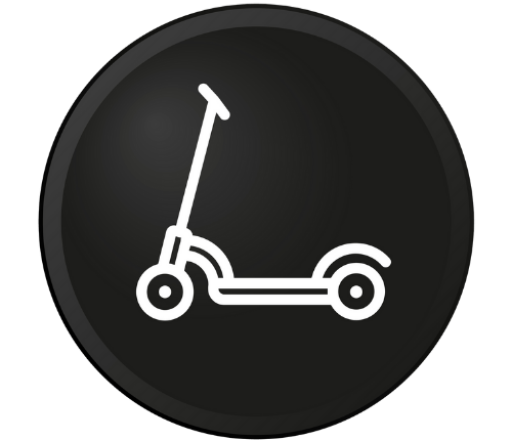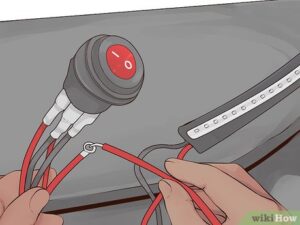City bicycles, designed for navigating the urban jungle with ease and style, have become a popular choice for those seeking a practical and enjoyable mode of transportation.
Whether you’re a seasoned commuter or a complete novice, understanding the basics of city bicycles can make your transition into urban cycling smooth and enjoyable.
This guide will walk you through everything you need to know about city bicycles for beginners, from selecting the right bike to mastering essential riding skills.
The Appeal of City Bicycles
City bicycles, often referred to as commuter or urban bikes, are specifically designed to handle the unique challenges of city riding. They offer several advantages that make them an attractive option for beginners:
- Convenience: City bikes are perfect for short to medium distances, allowing riders to bypass traffic, avoid the hassle of parking, and enjoy a more direct route to their destination.
- Health Benefits: Cycling is a low-impact exercise that improves cardiovascular health, strengthens muscles, and enhances mental well-being.
- Environmental Impact: By choosing to cycle instead of drive, you contribute to reducing air pollution and traffic congestion in your city.
- Cost Savings: After the initial investment in a bicycle, the ongoing costs are minimal compared to car ownership or public transportation fees.
Choosing the Right City Bicycle
Selecting the right city bicycle is crucial for a comfortable and enjoyable riding experience. Here are some key factors to consider:
- Frame Material: City bikes typically come with frames made from steel, aluminum, or carbon fiber. Steel frames are durable and provide a smooth ride, aluminum frames are lightweight and rust-resistant, and carbon fiber frames offer high performance but at a higher cost.
- Bike Type: There are several types of city bikes, including hybrid bikes, single-speed bikes, and electric bikes. Hybrid bikes are versatile and great for various terrains, single-speed bikes are simple and low-maintenance, and electric bikes provide assisted pedaling for easier rides.
- Fit and Size: Ensure the bike fits your body size and riding style. Most bike shops offer professional fitting services to help you find the perfect match.
- Gearing and Brakes: For city riding, consider bikes with internal hub gears for low maintenance and reliable shifting. Opt for disc brakes for better stopping power, especially in wet conditions.
- Comfort Features: Look for features like padded saddles, ergonomic grips, and upright handlebars that offer a comfortable riding position and reduce strain on your back and wrists.
Essential Accessories
To enhance your cycling experience and ensure safety, consider investing in the following accessories:
- Helmet: A must-have for safety, a well-fitted helmet can protect you in case of an accident.
- Lights and Reflectors: Ensure your bike has front and rear lights, as well as reflectors, to increase visibility during low-light conditions.
- Lock: A sturdy lock is essential for securing your bike when you’re not riding it.
- Bell or Horn: Use a bell or horn to alert pedestrians and other cyclists of your presence.
- Fenders and Racks: Fenders keep you dry in wet conditions, and racks or baskets can help carry groceries, bags, or other items.
Learning to Ride in the City
Riding in the city can be daunting for beginners, but with practice and confidence, you’ll soon navigate urban streets like a pro. Here are some tips to get you started:
- Start Slow: Begin with short, less busy routes to build your confidence and get used to handling your bike.
- Follow Traffic Rules: Obey all traffic signals, signs, and lane markings. Always ride in the direction of traffic and use hand signals to indicate turns.
- Stay Visible: Wear bright or reflective clothing, especially during dawn, dusk, or night rides. Position yourself in the lane where drivers can see you.
- Be Aware: Keep an eye out for car doors opening, pedestrians, and other obstacles. Use a mirror to check for traffic behind you.
- Practice Defensive Riding: Assume that drivers may not see you. Make eye contact with drivers at intersections and always be prepared to stop or take evasive action.
Joining the Urban Cycling Community
Cycling in the city can be a social activity as much as it is a practical one. Consider joining local cycling groups or clubs to meet fellow cyclists, participate in group rides, and learn from experienced riders. Many cities also have cycling advocacy organizations that promote bike-friendly policies and infrastructure improvements, providing a great way for you to get involved in making your city more cycling-friendly.
Conclusion
Embarking on your urban cycling journey with a city bicycle is a rewarding experience that offers numerous benefits.
By choosing the right bike, equipping yourself with essential accessories, and practicing safe riding techniques, you can enjoy the freedom, health benefits, and joy that come with cycling in the city.
Whether you’re commuting to work, running errands, or exploring new neighborhoods, a city bicycle can be your ticket to a more active, sustainable, and enjoyable urban lifestyle.



